You may recall seeing my post about the Landstad model 1900 semiauto revolver a while back…
Well, the gun (only one was ever made) was in a British collections for a hundred years, but recently was purchased by a Norwegian collector, and has now returned to its homeland. Thanks to Lars, a reader who happens to be a Norwegian gunsmith, we have a series of photos showing disassembly of this unique firearm. Thanks, Lars!

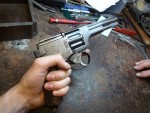
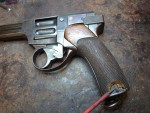
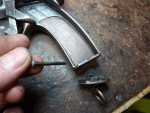
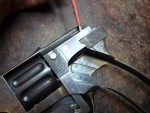
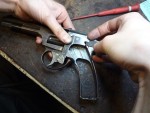
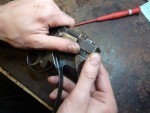
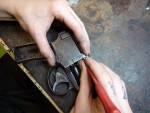
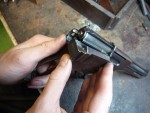
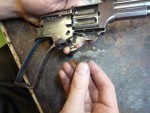
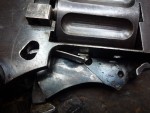
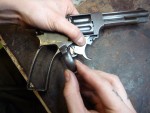
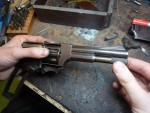
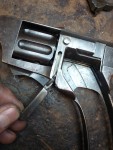
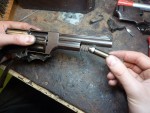
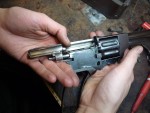
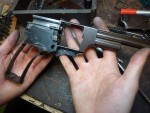
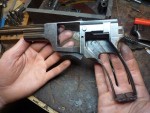
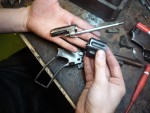
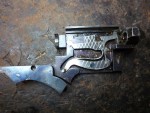
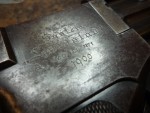
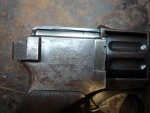

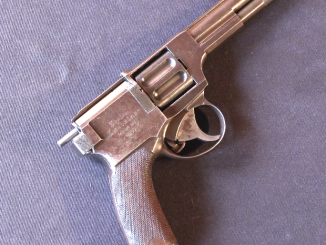
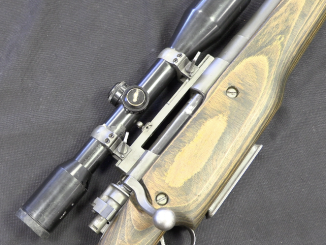
Thanks, Lars — neat stuff!
Great pictures, but the link to the older article is bad. Probably this one https://www.forgottenweapons.com/early-automatic-pistols/landstad-1900/
Semi-auto but not self loading? How DO you load it?
Ah. Thanks Mu. That explains it quite nicely.
The Landstad loading system from magazine to “cylinder” closely resembles the British Needham rifle patent, circa 1868. (Not to be confused with the Needham conversion breechloader Ian covered here a while back.)
It fed its “two-chambered” cylinder from a Winchester-type tubular magazine under the barrel, was worked by a lever-action similar to a Bullard, and used cartridges very like the Colt Thuer conversion revolvers, which were fed in from the front and ejected out the front as well.
The Landstad reverses this procedure, because obviously there’s no room for a tubular magazine out front due to the gas piston assembly, and the rimmed Nagant revolver round had to be fed from the rear anyway.
There were also four-shot “Bar” pistols, manually operated, with double over-under barrels that had a cylinder setup like this. Most of them were in .22, .25 ACP, or even .32.
All of which goes back to the old saying, “In engineering, if nobody does it ‘that way’, there’s usually a very good reason.”
cheers
eon
«All of which goes back to the old saying, “In engineering, if nobody does it ‘that way’, there’s usually a very good reason.”»
But if you want to have progress you have to try different solution, i.e. build prototypes to see whatever something is working or not.
“because obviously there’s no room for a tubular magazine out front due to the gas piston assembly”
And anyway capacity of tubular under-barrel magazine in handgun is heavy restricted.
Well, perhaps the inventor was trying to find a solution that was crazy enough to work!
One things catch my attention:
System “Landstad” is in Schwabacher Schrift. Was it popular for 1890s Norwegian fire-arms manufacturers to use it, or Landstad want add unique element to his gun?
I don’t know about Norway, but it was taught in Danish elementary schools until the 1920ies
Honestly, I’d say this is a far more interesting firearm, compared to the Webley-Fosbery or the Unica Autorevolver.
I love generally auto revolvers but one can love them to much methinks.
Talk about a Steampunkers dream.
Nevertheless, awesome.
For me the most steam-punk hand-gun ever produced in real-world will be MARS automatic pistol, firing .455 Mars (read: .455 Badass) cartridge, and being mechanical sophisticated.
Guys, there was a variant of the Webley & Scott No. 1 revolver that featured an “auto-ejector” function. There’s a reason it didn’t catch on…
http://www.peashooter85.com/post/132050586614/the-silver-and-fletcher-royal-irish-constabulary
Most obviously, other than not working, that when it did work correctly it flipped the empty out with about the same force as the Thuer Colt exerted in throwing its empties forward. Meaning, a Silver & Fletcher Webley could easily boink you in the nose with a hot case.
The Dardick was really the only semi-practical “hybrid” of an autopistol magazine feed and revolver-type action, even though it was wholly “manually operated”.
It occurs to me that with the modern concept of Plastic-Cased Telescoped Ammunition (PCTA), the Dardick action with is “trounds” could come back into vogue. Not so much in handguns, but in self-loading actions intended for very high rates of fire.
Imagine a “revolver-breech” automatic cannon in about 25mm with a Dardick “rotor” instead of a conventional cylinder. Direct feed in from the side rather than requiring each round be rammed in from the rear, direct ejection out on the other side without having to extract the empty aft first.
You’ve reduced the number of motions needed to feed and eject each round by half. Which by itself probably doubles the practical rate of fire.
Add in the smaller overall dimensions of a PCTA “tround”, and you can carry enough (t)rounds in the ammo tank to give you a decent number of seconds of firing even with the doubled RoF.
If you’re feeling really nasty, use a combustible case (making it a Combustible PCTA, or CPCTA), and eliminate the ejection half of the cycle except for exhausting gases and the occasional dud round. Thereby increasing the RoF probably another 20%, anyway.
Imagine a mobile 25mm triple A like the Russian 30mm Tunguska with that kind of firepower potential. Not quite up to MetalStorm, but nasty enough to give tactical air a severe shock.
Cruise missiles would hate it.
cheers
eon
Most enterprising of you, eon! If you could get the idea past the conservatives in arms-development, the tround anti-air could save users some maintenance bills (perhaps a few hundred dollars saved by eliminating unnecessary parts). The only setbacks would be development costs and training operators on how NOT to try to clear jams if any occur.
“Thereby increasing the RoF probably another 20%, anyway.”
Wait, more RoF, mean more heat per second, mean barrel become hot faster. I suspect that this or that RoF is caused rather by current art of state of metallurgy than mechanics, i.e. mechanically it is possible to build gun with higher RoF but it will melt barrel down, as in 1930s Soviet Yurchenko 7.62 machine gun
(photo: http://raigap.livejournal.com/152801.html )
it was invented in “mid-1930s”, fire 7.62x54R, has RoF=5000 but due to limits in metallurgy barrel with feasible life can’t be crafted.
A Gatling-type “Dardick” would be one answer to that, say 4 barrels to keep topweight down. Or water cooling of the single barrel.
The old Lowell mechanical machine gun offers another possible answer. It had multiple barrels like a Gatling, but instead of rotating them as it fired, they were rotated manually between magazines-full to bring a cool barrel “up”, rather like changing barrels on an MG42.
Best answer of all might be a barrel composed of ceramics similar to those used in spacecraft heat-shields or ceramic-bladed knives. The high heat-transfer rate of the ceramic would virtually eliminate overheating. The major problem with that, of course, is coming up with a ceramic that is mechanically strong enough to handle firing stresses and bore wear.
cheers
eon
Don’t we already have ceramic liners for car cylinders? If so ceramics able to handle firing stresses may not be all that far off.
@Kimfella and eon:
And therefore, you have found a way to more quickly turn the opposition into Swiss Cheese. Where did we put the crackers, by the way?